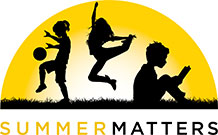Purpose
Program has mission and vision statements that are grounded in the needs of its community and connected to a current strategic plan. Program sets annual goals for youth and the organization that drive a continuous cycle of evaluation and quality improvement.
Mission and Goals
- Grounded Mission and Vision – Program has used a variety of information information sources, including direct feedback from community members, to conduct a community needs assessment. Program has mission and vision statements that are connected to the needs of the community served.
- Youth Outcome Goals – Program has at least two youth outcome goals that are aligned with the mission and the needs of the youth served and have all of the following characteristics: specific, measurable, realistic and time-limited.
Evaluation and Evidence
- Goal Measurement – All youth outcome and organizational goals are tied to indicators and data collection methods.
- Stakeholder Perspective Data – Program collects data on stakeholder perspectives from at least three groups (ex. staff, youth, families, and partners).
- Average Daily Attendance – On average, participants attend at least 85% of the summer session.
Planning
Program is designed to allocate enough time, staff and resources to promote positive academic and developmental youth outcomes. Program has a proactive summer program planning process that is inclusive of all key stakeholders and connected to the goals of the program. Program has a comprehensive structure in place for all programming throughout the summer, in advance of the session.
Program Design
- Adult to Youth Ratio – The average program activity has an adult to youth ratio 1:8 or lower.
- Physical Activity – Program dedicates at least 30 minutes per three hours of programming to physical activity for all youth.
- Food Service – All meals (as appropriate for schedule) are provided to participants everyday the program is in session.
- Total Hours of Programming – Program offers a minimum of 150 hours of programming to each youth.
Curriculum and Activity
- Staff Collaborative Planning – Site coordinators and line staff have input into selection and development of the curriculum and activities for the summer through collaborative planning sessions at least three months prior to the start of the session.
- Lesson Plan Framework – Program provides site coordinators and line staff a framework for unit and lesson planning that is connected to program goals and includes instructional strategies and support for benchmarking. Staff consistently uses framework to plan units and lessons.
- Use of a Certificated Teacher – There is a certified teacher on staff or available for consultation from the beginning and throughout the duration of the curriculum development and activity planning process to assist staff.
Staff
Program’ s recruitment and staffing process intentionally yields culturally competent staff with relevant skills. Program staff is empowered to manage the program and has a voice in organizational decisions. Program provides extensive opportunities for staff development and advancement before, during, and after the session.
Staff Training
- Alignment of Staff Needs and Training – Program formally assesses staff abilities upon hire against a set of articulated competencies for each position and sets training objectives based on identified needs in those competencies.
- Staff Training Timeline – Program requires summer program-specific staff training, connected to identified staff needs, at least two weeks before the program starts and includes additional paid time for individual or group preparation.
Staff and Professional Development
- Site coordinator observes each staff member multiple times during the summer session and provides feedback connected to identified staff competencies at planned intervals.
Partnerships
Program builds and maintains strong linkages with partners, including community organizations, the public school system, and government agencies, that are supportive of its mission and have a vested interest in the program’s success. Program has a formal structure for communication and data sharing with all key external partners. Program builds and maintains strong linkages with families.
School and Community Organizations
- Partner Staff Collaboration – Program and partner staff collaborate to align program activities and coordinate services for youth. Strategies such as joint training, team-teaching, co-facilitation, shadowing, and mentoring are implemented.
Families
- Relationship Building With Families – All staff makes an effort to learn the names of all parents and caregivers and greet them personally. All staff makes a regular effort to share positive information and constructive feedback with parents and caregivers about their child through both written updates and conversations.
- Family Involvement – Families are considered primary stakeholders in the program and there are both required and voluntary opportunities for families to participate in the program.
Individualized
Program assesses young people’s needs and develops individualized strategies for meeting program goals.
- Individualized, Tailored Instruction – The results of the pre-program assessment(s) inform lesson planning and instruction, and staff is equipped with skills to differentiate activities for youth of different abilities or attitudes.
- Multiple Grouping Strategies – Most activities show a blend of large group, small group, and individualized instruction that is planned in advance. Transitions between groupings are smooth for both youth and staff.
Integrated
Programming builds skills, knowledge, and behaviors that promote academic success and healthy development. Activities show a blend of academic and social/emotional development strategies throughout the entire day.
- Integration of Academic and Developmental Focus – Program schedule and activities show a full integration of strategies to promote academic growth and strategies to promote social or emotional growth. All staff leads integrated activities throughout the day.
- Positive Reinforcement – All staff use positive reinforcement to recognize movement toward specific group or individual goals in all activities. Positive reinforcement highlights specific behavior rather than praising or calling attention to a particular participant doing the behaving.
- Behavior Management – Program environment is characterized by an intentional, consistent behavior leadership style led by both staff and youth throughout the entire program day. Staff and youth hold each other accountable to a jointly developed behavioral contract that defines positive behavior expectations and consequences. Staff and youth consistently demonstrate how the contract is applied and what it looks like in practice.
- Inquiry Based Learning – Most activities involve a hands-on, kinesthetic or project-based component that allows youth to engage in in-depth investigations with objects, materials, phenomena, and ideas and draw meaning and understanding from those experiences.
- Collaborative Learning – Most activities promote collaborative learning and interdependence among youth. Successful completion requires youth to work together to produce a product or display of their shared learning.
- Creative Thinking – Most activities foster creative development and allow youth to choose active or artistic expressions to convey ideas and build skills. Creative activities are tied to age appropriate skills and learning comprehension.
- Youth Produced Work – Most youth-produced work has a purpose and a value in the program. Presentation and sharing of youth work is a regular part of activities. Program projects and activities lead to a tangible end product that reflects the work of the youth over the course of the summer.
- Youth Voice – Over the course of the program, all youth have the opportunity to make major decisions, based on their interests, which impact what and how they learn in the program.
Unique Program Culture
Program creates a “summer culture” that is different from the school year and promotes a sense of community.
- Program Spirit – Program creates a spirit of community and pride among all young people through: daily shared traditions, cheers, competitions, team designations, and awards for positive actions or attitudes.
- Physical Environment – Physical environment promotes creative thinking and exploration. Activity space set-up is different from a traditional classroom, with furniture arranged to create an intimate, interactive environment. Activity spaces are named in relation to the theme or goals of the program. Decorations are youth-driven and thematic.
- Transitions and Meals – Arrival, departure, transitions and meal times are positive, unique experiences. Program incorporates themes, entertainment or aspects of program culture into most of the unstructured time.
Intentional
Activity planning and execution shows intentional focus on meeting learning goals and use of research-based instructional methods.
- Advance Planning – All activities show evidence of a detailed lesson plan and begin and end on time.
- Clear Expectations – Staff sets clear expectations for activities by consistently framing and focusing the activity using these four strategies: Directions for the activity; discussion of how success will be achieved and assessed; discussion of the level of attention or interaction required; and clarifying statements to refocus participants as needed.
- Debriefs/Checks for Understanding – All staff use debriefing techniques, recall and checks for understanding throughout the duration and at the end of each activity. Staff may ask participants to recall factual information, make generalizations, inferences or real-world applications based on what they have learned. Recall connects previous learning to current activities.
- Staff Engagement – All staff have a clear role in the success of their activities they co-facilitate and are actively engaged throughout all activities.
- Skill Building – Most activities are intentionally linked to age-appropriate academic and developmental skills and work to build subject matter expertise and skill mastery through deep analysis of a subject or idea.




